Top 10: Rules of the Highway Code you probably didn't know
The Highway Code is something most drivers won't have looked at since they passed their driving test. It's essential reading for everyone - motorists, cyclists, pedestrians, horse riders and all other road users. And with more than 300 rules, many of which are legal requirements, it pays to know the ins and outs to make sure you stay safe.
Here are 10 of the more unusual ones you may not know.
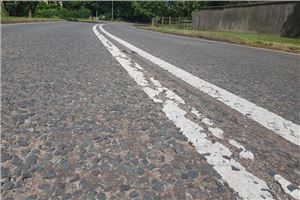
Solid white lines mean no passing - not just 'no overtaking'
A double white line, where the line nearest you is solid, means you MUST NOT cross or straddle it (unless you're entering or leaving from a side road).
Rule 129 states that you can only cross the line, provided the road is clear, to pass a stationary vehicle or overtake a bicycle, horse or road maintenance vehicle if they are travelling at less than 10mph. So if you're sat behind a tractor doing 15mph, overtaking it would mean you're technically breaking the law.
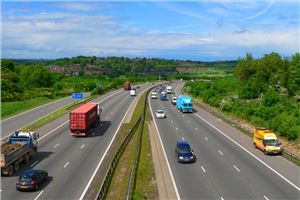
The hard shoulder of a motorway has a speed limit
While the hard shoulder is only intended for emergency use - something which still seems to be unknown to many drivers - it does actually have a speed limit.
Like the rest of the motorway, it's 70mph if you're in a car or on a motorbike. The reason? Well if you're attempting to rejoin the motorway following a breakdown, you need to build up your speed before finding a safe gap in the traffic. The exception of course is unless the speed limit is otherwise stated, such as on smart motorways.
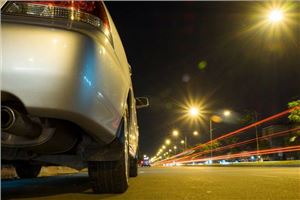
You must not park facing the wrong way at night
Another rule of the Highway Code that is rarely enforced surrounds parking at night. Despite the fact that many ignore it, rule 248 states that you MUST NOT park on a road at night facing against the direction of traffic, unless in a recognised parking space.
Other countries have taken enforcement of this rule a step further. For example in Australia it is against the law to park facing against the flow of traffic at any time of day.
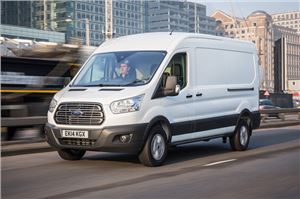
The speed limit for a van on a dual carriageway is 60mph
Travel along any given dual carriageway at rush hour and you'd be forgiven for thinking this is a rule that doesn't apply. But while all those courier vans may be in a rush to leave 'sorry we missed you' cards on your doormat, the speed limit for any van up to 7.5 tonnes, regardless of size, is 60mph on a dual carriageway.
The complication comes with van-based cars, such as the Volkswagen Caravelle. Here it depends on their classification. N1 is a van and limited to 60mph, while M1 is classed as a dual purpose vehicle and has the same speed restrictions as a car.

You must not leave a car running unattended - even if you’re de-icing it
Rule 123 is very clear on this, stating that you MUST NOT leave a parked vehicle unattended with the engine running or leave a vehicle engine running unnecessarily while that vehicle is stationary on a public road. How long is that? The Highway Code says any 'more than a couple of minutes' and you should switch off the engine.
The key words here are 'public road'. You can leave it running on private land, such as your driveway.

You must use headlights when visibility is seriously reduced
While automatic and daytime running lights are a great invention, it doesn't need to be dark for visibility to be poor. Yet it's amazing how many people will drive on the motorway in heavy rain or even fog and mist, without their lights fully on.
The Highway Code says headlights MUST be used when generally, you cannot see for more than 100 metres. Of course, the opposite is true and rule 236 says that you MUST NOT use front or rear foglights unless visibility is seriously reduced.

Coaches are not permitted on the outside lane of a motorway
While the official speed limit for coaches is 70mph on motorways, they are in fact limited to 62mph (although older vehicles may be at 65mph). But what they cannot do is use the outside lane, although it's not an uncommon sight to see coaches doing just that.
The same rule applies to anything towing a trailer (regardless if it’s fully laden or not) including caravans and any van under 7.5 tonnes that's fitted with a speed limiter.
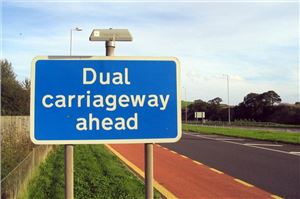
A dual carriageway can have a single lane
This is technically not a rule, but something that many people aren't aware of - and can break the speed limit as a result. The 'dual' part of the dual carriageway refers to the fact there are two separate roadways, divided by a barrier, grass or armco. So you can have a dual carriageway with a single lane, where the speed limit would still be 70mph, unless otherwise signposted.
Conversely, you can have a multi-lane single carriageway - the Aston Expressway in Birmingham is a good example - where the limit is 60mph, regardless of how many lanes there are.
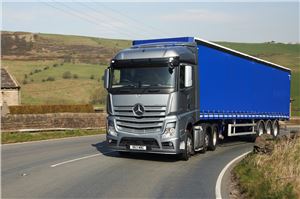
HGVs can only do 50mph on a single carriageway road - and 40mph in Scotland
Until April 2015, HGVs throughout the UK were limited to 40mph on a single carriageway road, much to the frustration of many car drivers who were ignorant of the law. However, new regulations upped this to 50mph while at the same time the limit was changed from 50mph to 60mph on dual carriageways.
But the old limits remain in place in Scotland, so if you're following an HGV across the border on a single carriageway and it starts travelling slower, you'll know why. The exception is the A9 from Perth to Inverness where the limit is 50mph.

You must drive around a mini-roundabout
Another rule that you'll see flouted constantly, the Highway Code says to approach these in the same way as normal roundabouts. So whether it's raised or just painted, the rule is that all vehicles, except those that are too large and physically incapable of doing so, MUST pass around the markings.
While it's unlikely, if spotted by the police, you could get a Fixed Penalty Notice and a fine.
